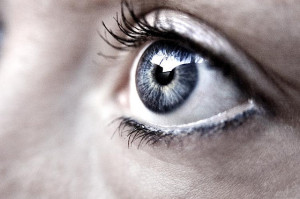Most people are familiar with migraines but not those which cause temporary blindness; these are retinal migraines that experts refer to as monocular (which mean “one eye”) or ophthalmic migraines. Although rare, retinal migraines typically accompany or precede a migraine and may lead to serious medical complications if not treated.
One out of 200 individuals experience retinal migraine. An ophthalmologist would be able to diagnose whether the symptoms point to retinal migraine and rule out any other conditions which may cause symptoms of similar nature. The treatment for retinal migraine is highly dependent on determination of its cause.
The International Headache Society (IHS) defines ocular migraine has a vision problem which affects only one eye with experienced symptoms such as:
- Blindness in that one eye.
- Flashing lights.
- Blind spots in the field or line of vision.
- Patterns of zigzags.
- Shimmering stars or spots.
The distinctive difference between a classic migraine and a retinal migraine is that in the latter, only that one eye is involved and can potentially be blind, albeit temporarily, for approximately one hour until normal vision is restored. Although retinal or eye migraine may or may not be accompanied by a headache that characterizes a typical migraine, some experience it alongside nausea and vomiting.
Symptoms of Retinal Migraine
 Anyone can experience retinal migraine but the most likely age and gender groups would be females between their 20s and 30s. Women in these age groups are thrice likely to experience retinal migraines than men and experts think that this difference is due to hormonal changes associated with the menstrual cycle. That said, it must be noted that classic migraines typically include a phase known as the “aura” that affects both eyes in several visual changes.
Anyone can experience retinal migraine but the most likely age and gender groups would be females between their 20s and 30s. Women in these age groups are thrice likely to experience retinal migraines than men and experts think that this difference is due to hormonal changes associated with the menstrual cycle. That said, it must be noted that classic migraines typically include a phase known as the “aura” that affects both eyes in several visual changes.
Retinal migraines, on the other hand, involve visual changes in one eye only by causing complete loss of vision or blind spots in that one eye. In some instances, the visual changes can occur without other accompanying symptoms while at other times these visual changes lead first to light sensitivity and then to throbbing pain of a headache. Retinal migraine headache begins an hour after the onset of these visual symptoms; the headache develops on that side of the head where there is occurrence of the visual changes.
Duration of a Retinal Migraine
These visual changes from a retinal migraine may last several minutes or for an hour. Although rare, there have been retinal migraine symptoms, in which vision loss was prolonged for several days. Retinal migraines may occur daily or monthly for some and once or twice in a lifetime for others.
A headache that accompanies a retinal migraine feels moderately painful, pulsates intensively, feels worse when there is physical activity, nausea, affects only one side of the head, vomiting, unusual light and/or sound sensitivity, and may last between four and 72 hours.
Diagnosis of Retinal Migraines
Possible underlying causes such as a stroke or blood clot must first be eliminated to fully confirm that the condition is retinal migraine; a symptom of retinal migraine such as seeing flashing lights, for instance, might also mean a condition of detached retina which requires prompt medical attention.
The HIS has the following guidelines for consideration in diagnosing retinal migraines:
- Headaches which begin one hour after the start of visual changes and further characterized by one-sided pain in the head which is throbbing or pulsating in quality.
- Visual changes that are completely reversible affect one eye only during an episode.
- Nausea occurs when the headache is experienced.
- Vomiting may happen after feeling nauseous.
While non-conclusive at the moment, spasms in the retina’s blood vessels and changes in the retina’s nerve cells are being studied as possible causes for retinal migraine. Most people have difficulty telling the difference between seeing flashing lights or blindness in that one side of vision involving both of their eyes and the same symptoms in one eye only; but this ability to distinguish is significant to enable the administration of appropriate medication.
Triggers of Retinal Migraine Episodes
- Skipped meals.
- Sleep deprivation.
- Stress.
- Specific foods.
Avoidance of these triggers may help limit the frequency of retinal migraines or prevent them from occurring entirely.
Retinal Migraine Treatment
Individuals who have chronic retinal migraines are in danger of developing permanent loss of vision. Pharmacological medication are the first line of treatment for retinal migraines, although it is still debatable whether or not taking painkillers to prevent the onset of temporary vision loss is effective.
While migraines can be treated with triptans, a class of medication that causes constriction of the blood vessels, they are not advisable as retinal migraine treatment. Although research for retinal migraine has been limited, your doctor may be able to prescribe any of the following to alleviate any pain which may accompany a bout of any of retinal migraine’s symptoms:
- Divalproex sodium or topiramate.
- Aspirin.
- Tricyclic anti-depressants.
- Beta-blockers.
- Fioricet.
How Fioricet may Help Relieve Pain from Retinal Migraine
Fioricet is an analgesic combination of butalbital, caffeine, and acetaminophen and categorized as a painkiller. Although typically prescribed for migraine headaches, you can consult your doctor for its availability as a retinal migraine treatment.
Although not considered as a general type of painkiller, Fioricet’s analgesic properties are suitable for relieving pain due to other medical conditions such as retinal migraine. Fioricet comes as tablet and capsule forms in dosages of 325mg, 500mg, and 650mg.
Share This